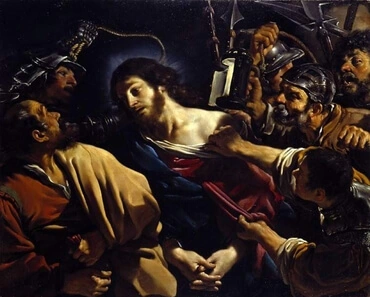Explanation of John 1:9
By Brian David

When we hear the word "truth," we tend to think of statements that are rather cold, dry and academic. That kind of truth, however, is a form taken to the most specific, external levels; at its heart truth is simply an expression of love, and the closer it is to that love the more dynamic, warm and creative it is.
Think, for instance, of a beautiful picture sent from one person to another through computers. The first person sees the picture, is moved by it, and wants to share it. The computer analyzes that picture as millions of tiny colored dots that can be expressed mathematically, information that can be shared. The second person’s computer gets that information, puts all the colored dots together and shows the picture so the second person can be moved as well. In the eyes of the two people, that picture is a relatively internal truth, a pretty direct container for specific feelings. In between, broken into tiny bits of information, that picture is still a truth - it still exists - but it is in much more external form, further removed from the emotional content.
The uiltimate "emotional content" is, of course, the Lord’s love, so perfect and powerful that we can only picture it by imaging a walk on the sun. It’s immediate expression is "the light" in this verse - what the Writings call divine truth. It’s like taking that pretty picture and multiplying it to the zillionth degree, until it’s so beautiful it knocks us from our feet and forces us to shield our eyes. It is the expression on the Lord’s face, if we could stand seeing it; it’s like the sound of His voice if we could stand hearing it. That picture is truth - it is a way of sharing internal states at the most extreme, exquisite level.
So how can we tap into that? How can we bring that kind of truth into our lives? The answer is that we need to be "the world," finding the light in "every man." The world represents the church, which the Writings define as "where the Lord is known and where the Word is." We have the Word, in the form of the Bible; knowing the Lord is up to each of us as an individual. "Man" here represents truth on a more external level, expressions of the Lord’s love broken down into ideas that can be applied to our lives.
What this verse tells us, then, is that if we read the Bible with the Lord’s love in mind, we will find ideas and guidelines that will lead us to be good, loving people. We can connect with the divine truth and get it in little bits that we can use.
(References: Apocalypse Explained 196; Arcana Coelestia 9407 [13])
Arcana Coelestia #3210
3210. 'And Isaac brought her into the tent of Sarah his mother' means the sanctuary of truth within the Divine Human. This is clear from the meaning of 'a tent' as that which is holy, dealt with in 414, 1102, 2145, 2152, 2576, and so the sanctuary; and from meaning of 'Sarah his mother' as Divine truth, dealt with in 1468, 1901, 2063, 2065, 2904, from which the Divine Human was born, the Rational of which is represented by 'the son Isaac'. From this it is evident that 'Isaac brought her into the tent of Sarah his mother' means that rational Good guided Truth represented by Rebekah into the sanctuary of truth. What the sanctuary of truth is becomes clear from what has been stated above in 3194 about the Lord's Divine Human - that Good and Truth belong essentially to the Divine itself, but that the Lord's Divine Human came into existence from Divine Good and was born (as to the Divine itself, that is) from Divine Truth; or what amounts to the same, that the Lord's Essential Being (Esse) was Divine Good, but the Manifestation (Existere) of Him was Divine Truth. From this came Divine Rational Good to which He joined Divine Truth from the Human.
[2] It is impossible to say anything more about this very deep arcanum than this: Divine Good and Truth themselves within the Lord's Divine Human to which Truth from the Human was joined are what were meant by the Sanctuary or Holy of Holies in the Tabernacle and in the Temple. The nature of that Good and Truth was represented by the objects within the Sanctuary, such as the golden altar, the table with the loaves of the presence, and the lampstand; and further within, by the Mercy Seat and the Ark; and within it, inmostly, by the Testimony which was the Law delivered from Sinai. This was the Holy of Holies itself or Sanctuary of Truth.






